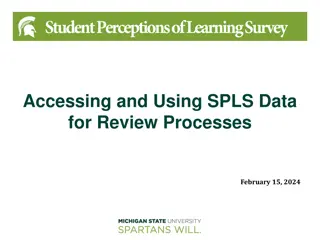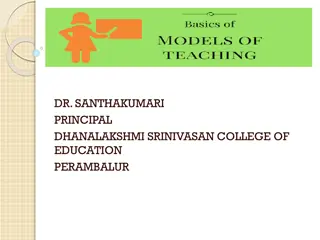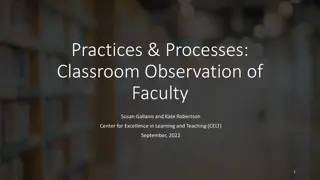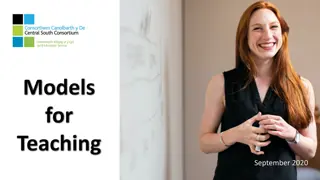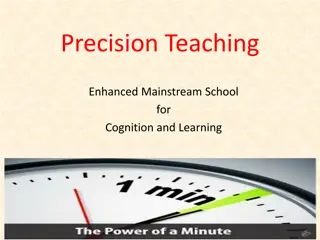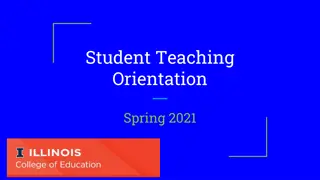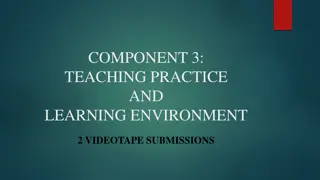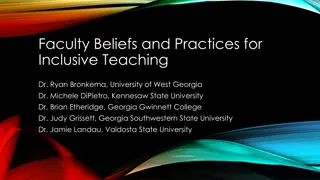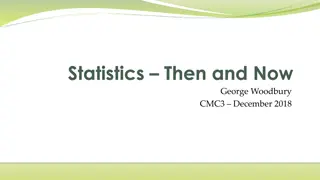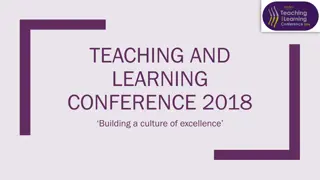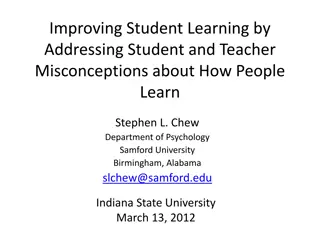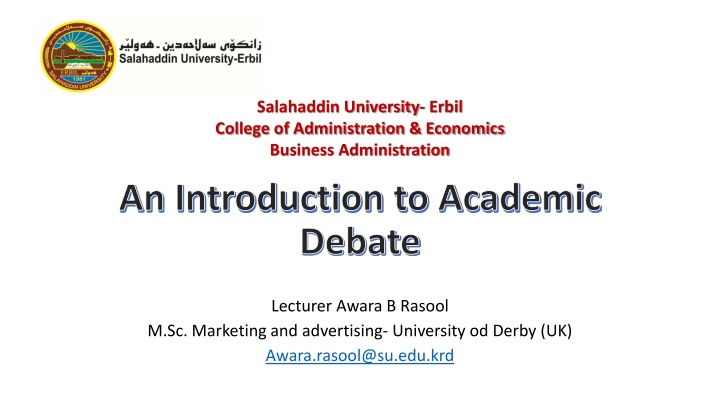
Develop Critical Thinking and Communication Skills in Academic Debate
Enhance your critical thinking and communication skills through an academic debate course at Salahaddin University, Erbil. Explore different approaches to learning, thinking skills, fact vs. opinion, and the art of debating and argumentation. Join us to sharpen your intellectual abilities and reasoning capabilities.
Download Presentation

Please find below an Image/Link to download the presentation.
The content on the website is provided AS IS for your information and personal use only. It may not be sold, licensed, or shared on other websites without obtaining consent from the author. If you encounter any issues during the download, it is possible that the publisher has removed the file from their server.
You are allowed to download the files provided on this website for personal or commercial use, subject to the condition that they are used lawfully. All files are the property of their respective owners.
The content on the website is provided AS IS for your information and personal use only. It may not be sold, licensed, or shared on other websites without obtaining consent from the author.
E N D
Presentation Transcript
Salahaddin University- Erbil College of Administration & Economics Business Administration An Introduction to Academic Debate Lecturer Awara B Rasool M.Sc. Marketing and advertising- University od Derby (UK) Awara.rasool@su.edu.krd
First: Introduction to Thinking skills and First: Introduction to Thinking skills and Communication (1) How should we think and debate? Communication Thinking process differs from person to another according to intellectual activities. Thinking is a human ability that can be developed through training. (2) Approaches to learning and teaching: Two types of learning in daily life are: 1. Teacher-centred Instruction: this is a one-way learning process, from the teacher to the student 2. Student-centred Instruction: this is a two-way learning process, from the teacher to the student and vice versa. (3) Thinking Skills: 1. Lower-order Thinking Skills: Remembering Understanding Applying 1. Higher-order Thinking Skills: Analysing Evaluating Creating
First: Introduction to Thinking skills and First: Introduction to Thinking skills and Communication Communication (4) Critical Thinking: It is the ability to understand, evaluate and reach a conclusion about issues in accordance with certain criteria by means of observing, raising questions, comparing, checking arguments and logical reasoning. (5)Fact and Opinion: Fact: fact refers to something which can be proven. It expresses a truth that is reached by consensus which can be found out through observation possessing undisputable of details. For example: 9 is a bigger numeral than 8, or words can be nouns or verbs. Opinion: it is the expression of a person s viewpoints or it is expression of one s understanding, ideology or feelings. An opinion can be agreed or disagreed to. For example: Accountancy is a better and more suitable area than media or Audit is an easier subject than Principles of Finance.
First: Introduction to Thinking skills and First: Introduction to Thinking skills and Communication Communication (6) Debating and Argumentation: Debate: is a formal discussion about a certain topic reaching a common ground between two opposing sides. Argumentation: it is the process of reasoning the evidence in order to support your opinion. It is summarising your conclusions in order to convince the opposing side. Components of Argumentation: Students should learn that argumentation consists of the following three components: 1- Statement of possible truth: Students should be trained to start with conclusion they have reached. For example: Smoking cigarettes is less harmful than smoking hookah. 2- Supporting your statements: It is important that students should be trained so that when they demonstrate their views, they can support their statements with scientific evidence (referring to researches, surveys or collected data) rather than opinion. For example: According to Word Health Organisation, smoking a hookah equals 100 cigarettes. 3- Explain why the audience should care about the statement: Through demonstrating the importance of your viewpoint, you tell the audience why they should care about your topic. .
First: Introduction to Thinking skills and First: Introduction to Thinking skills and Communication (7) Steps of Critical Thinking Communication In order to train the students on critical thinking skill, they should be introduced to the following steps: 1. 2. 3. 4. 5. 6. Collecting data relevant to your topic. Demonstrating differing viewpoints. Discussing and checking the viewpoints to make sure they are valid. Separating effective and weak aspects of the viewpoints. Evaluating the viewpoints subjectively. Presenting arguments on the validity of the viewpoints. (8) Characteristics of Critical Thinking: A person possessing critical thinking ability has a number of characteristics: A person with this ability does not offer opinion on every topic; they do not talk about an issue about which they do not have sufficient information. They know when they need more information about a specific topic. They know conclusions can be correct or erroneous. They know that people have different understanding of a certain issue. They raise questions and investigate when issues are vague. They can tell the difference between emotional and logical thinking. They resort to reliable sources and refer to them. They care about every aspect of the topic equally. They do not deviate from the main idea of the topic. When there is a necessary argument they will have a response.
First: Introduction to Thinking skills and First: Introduction to Thinking skills and Communication PRINCIPLES OF COMMUNICATION Communication Communication is a two-way process of giving and receiving information through any number of channels. Whether one is speaking informally to a colleague, addressing a conference or meeting, writing a newsletter article or formal report, the following basic principles apply: Know your audience. Know your purpose. Know your topic. Anticipate objections. Present a rounded picture. Achieve credibility with your audience. Follow through on what you say. Communicate a little at a time. Present information in several ways. Develop a practical, useful way to get feedback. Use multiple communication techniques.
First: Introduction to Thinking skills and First: Introduction to Thinking skills and Communication Communication Principles of Effective Persuasion Whether making a formal presentation at a meeting or writing a report or fact sheet, the following principles hold. Do not oversell or overstate your case. Make effective use of understatement. Outline the topic you are trying to cover into two parts. The first part should give broad background information, while the second part provides a detailed summary. Persuasion depends on clarity and simplicity. Avoid the use of jargon and buzz words. Be prepared to back up claims or facts immediately. Incorporate major anticipated objections into your program or presentation. Address all relevant aspects of a topic, especially those that may affect the functioning of an organization. Use graphics and audio-visuals appropriately. Consider ways to get meaningful input from people. Find out what they think about the innovation or change.
First: Introduction to Thinking skills and First: Introduction to Thinking skills and Communication Components of an Effective Oral Report Communication Introduction Capture the attention of the group right from the start. Give the necessary explanation of the background from which the problem derived. Clearly state and explain the problem. Clearly state your objectives. Indicate the method(s) used to solve the problem. Suggest the order in which you will provide information. Organization Provide sufficient introductory information. Use transitions from one main part to the next and between points of the speech. Use summary statements and restatements. Make the main ideas of the report clearly distinguishable from one another.
First: Introduction to Thinking skills and First: Introduction to Thinking skills and Communication Communication Content Have adequate supporting data to substantiate what you say. Present supporting data clearly--in terms of the ideas or concepts you are trying to communicate. Use clear drawings, charts, diagrams or other aids to make explanations vivid and understandable. Conclusion Conclude your report with finality in terms of one or more of the following: the conclusions reached the problem solved the results obtained recommendations offered Question Period Give evidence of intelligent listening in interpreting the questions. Delivery Be natural, "communicative" in your delivery. Use frequent eye contact to maintain rapport with the audience. Vary your delivery with appropriate movements and gestures. Speak distinctly. Display confidence and authority. Express enthusiasm for your ideas.
Second: Report Writing Skills Second: Report Writing Skills Report structure: 1. Title and author 2. abstract 3. Introduction 4. Literature Review/Background 5. Methods 6. Results 7. Discussion 8. Conclusion and recommendations 9. References and Bibliography
Second: Report Writing Skills Second: Report Writing Skills Report writing Selecting a Topic The ability to develop a good research topic is an important skill. An instructor may assign you a specific topic, but most often instructors require you to select your own topic of interest. When deciding on a topic, there are a few things that you will need to do: Brainstorm for ideas choose a topic that will enable you to read and understand the literature ensure that the topic is manageable and that material is available make a list of key words be flexible define your topic as a focused research question research and read more about your topic formulate a thesis statement
Second: Report Writing Skills Second: Report Writing Skills 1. Referencing & Citation - The Harvard System 2. Avoid Plagiarism- Quotations, Paraphrasing and summarizing How to avoid Plagiarism? Learn good note-taking techniques Paraphrase appropriately Summarize correctly and efficiently Use direct quotations appropriately Use 'common knowledge' Organize your sources Reference your sources correctly
Second: Report Writing Skills Second: Report Writing Skills 3. Note Taking: Note-taking is the practice of recording information captured from another source. To be successful at note taking, you need to 1. Improve your listening skills. 2. Develop your note taking skills. 3. Be able to use your notes to study
Fourth: Seminar/ Public Speaking: Fourth: Seminar/ Public Speaking: How to give a good presentation? Why bother giving a good talk? First impressions matter! There s no point doing good work if others don t know about it or can t understand what you did. Good practice for a teaching career! Good practice for any career! Helps you sort out what you ve done, and understand it better yourself. Top ten pointers for a good talk: 1. Be neat 2. Avoid trying to cram too much into one slide: Don t be a slave to your slides. 3. Be brief: use keywords rather than long sentences 4. Avoid covering up slides 5. Use a large font 6. Use color to emphasize 7. Use illustrations to get across key concepts. May include limited animation 8. Make eye contact 9. Be ready to skip slides if time is short 10.Practice!!
Fourth: Seminar/ Public Speaking: Fourth: Seminar/ Public Speaking: How to give a good presentation? A typical project talk outline: Title/author/affiliation (1 slide) (Who am I?) Forecast (1 slide) Give gist of problem attacked and insight found (What s the problem?) Outline (1 slide) o Background Motivation and Problem Statement (1-2 slides) (Why is it important?) o Related Work (0-1 slides) (What have others done?) o Methods (1-3 slides) explain your approach; illustrate algorithm (What s my approach?) o Results (2-6 slides) Present key results and key insights. This is main body of the talk, but don t try to show ALL results. o Summary(1 slide) o Future Work (0-1 slides) o Backup Slides (0-3 slides) Optionally have a few slides ready to answer expected questions.
Fourth: Seminar/ Public Speaking: Fourth: Seminar/ Public Speaking: Negotiation & persuasion skills: Persuasive speaking - A. Explain what a persuasive speech is. B. Describe the functions of persuasive speeches. C. List the different types of persuasive speeches. D. Identify persuasive strategies that make a speech more effective. E. Apply the appropriate organizational pattern based on your persuasive goals. F. Distinguish between ethical and unethical forms of persuasion. G. Apply module concepts in final questions and activities Supporting your ideas - A. Combine multiple forms of evidence to support your ideas. B. Differentiate between the three types of testimony, and know when to use each one. C. Navigate the library holdings and distinguish between the types of information found in each section. D. Evaluate source credibility and appropriateness for your speech. E. Explain plagiarism and implement strategies to avoid it. Apply chapter concepts in review questions and activities. F.
Five: Event and Academic Poster Five: Event and Academic Poster Poster Design A poster is any piece of printed paper designed to be attached to a wall or vertical surface. Typically posters include both textual and graphic elements, although a poster may be either wholly graphical or wholly text. Posters are designed to be both eye- catching and informative. Pick a software program -PowerPoint -Adobe Illustrator or InDesign Event Poster (Flyer) Posters advertising events have become common. Any sort of public event, from a competition to a play, may be advertised with posters; a few types of events have become notable for their poster advertisements.
Five: Event and Academic Poster Five: Event and Academic Poster Typical requirements of an Event Poster are: Logo (Organizer and/or Sponsors) Title Photo(s) Motto Venue, Date and Time When design an Event Poster consider: Paper size, A3 (29.7 X 42cm) Font type and size (experiment with typography) Effective use of colors (create energy, elicit a mood and attract the eye) Visual hierarchy Remove unnecessary elements (say more with less) Visual interest and attraction (use shapes, fonts, colors, etc.) Design composition (how graphics interact with words) The audience (design for your audience)
Five: Event and Academic Poster Five: Event and Academic Poster Academic Poster Posters are widely used in the academic community, and most conferences include poster presentations in their program. Research posters summarize information or research concisely and attractively to help publicize it and generate discussion. Typical requirements of an Academic Poster are: Get the academic content right Cut the text down to 300-400 words Format the type Prepare your images Design the layout Choose a colour scheme Check it (very carefully) When design an Academic Poster consider: Poster size, A1 (59.4 X 84.1cm) Font type and size (experiment with typography) Use colour to attract attention, organize, and emphasize (but don't overdo it) Keeps the sequence well-ordered and obvious (coherent flow of information) Use of bullets, numbering, and headlines make it easy to read Organize your poster in columns (easy to follow) Remove unnecessary images and texts (say more with less) Keep posters visual (images and graphics say much more than words) Design composition (how graphics interact with words) Keep balance and white spaces (keep the background simple) The audience (design for your audience) Prepare a 3-5 minute verbal explanation Prepare mini size poster handouts
Five: Event and Academic Poster Five: Event and Academic Poster 1. Reporting on research If you are reporting on a piece of research, your structure will be similar to a research report: Title Introduction Methods Results Discussion Conclusion References 2. Reporting on a solution to a problem If you are illustrating how a particular problem was solved, or how a challenge was addressed, the structure might be: Title Background Definition of problem Possible solutions Rationale for choice of one solution Implementation Evaluation
Five: Event and Academic Poster Five: Event and Academic Poster
Six: Introduction to Academic Debate: Six: Introduction to Academic Debate: Debate Skills: A. Coordination skills B. Investigating and analyzing C. Critical thinking skills D. Open-mindedness E. Speaking skills F. Organization G. Listening skills H. Self-confidence I. Team work and cooperation


